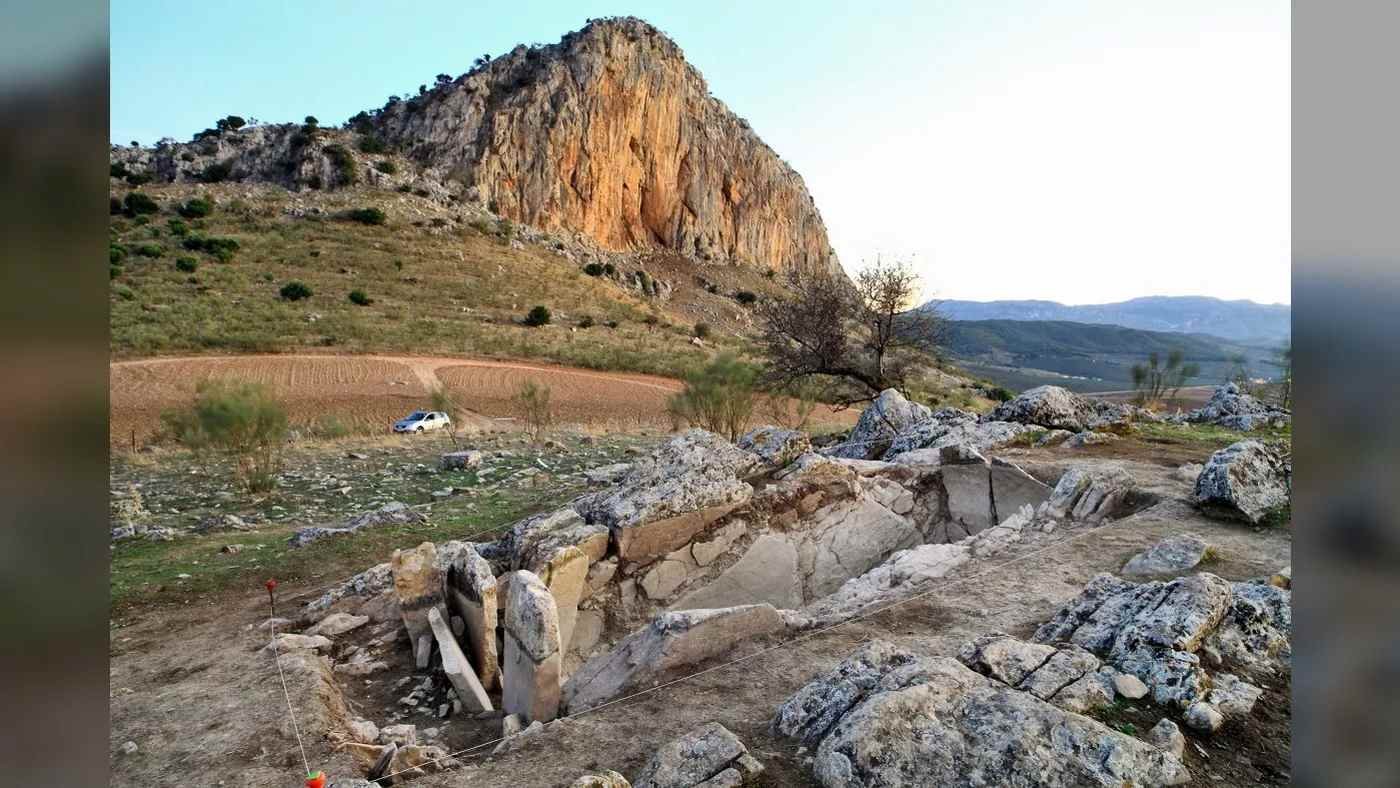Story at a glance…
-
An incredible stone tomb has been found at a famous Neolithic site in Spain.
-
A slot in the wall allows the sun on the summer solstice to spill onto an oceanic stone slab at the back of the tomb.
-
The archaeologists highlight the connections between many European peoples’ beliefs during the Neolithic Period.
Archaeologists working in Spain’s most famous archaeological site have uncovered a 5,400-year-old tomb that perfectly aligns to the summer solstice sunrise in such a way as to be described as “domesticated sunlight”.
That strange term is used because of the rich variety of designs that appear in shadow on a stone stele on the right-hand side of the tomb when hit by the light of the rising sun on June 21st, producing an effect not unlike Newgrange in Ireland.
The tomb was discovered in the Antequera Dolmens UNESCO World Heritage Site near the town of Antequera, southern Spain. The 6,100-acre (2,446-hectare) site contains a mix of megalithic and dry stone Neolithic burial architecture unsurpassed in all of Europe, many of which contain archaeoastronomical alignments.
“Newgrange is much bigger and more complex than the tomb we have discovered [in Spain], but they have something in common — the interest of the builders to use sunlight at a specific time of the year, to produce a symbolic—possibly magic—effect,” Leonardo García Sanjuán, an archaeologist at the University of Seville, told Live Science reporting on the discovery.
In the case of this tomb, called Piedras Blancas, or “White Stones” the base had exposed bedrock layers that tilted away from the sunrise, and so workers deliberately carved out a channel for light to enter and dance with shadows upon the walls inside.
The tomb was found quite near a remarkable limestone formation called La Peña de los Enamorados—the Rock of the Lovers—named after a legend that says two star-crossed lovers once killed themselves by jumping off it. It’s even closer to the Matacabras rock shelter, which is adorned with pictographs thought to be painted about 5,800 years ago.
“Antequera illustrates the power by which nature presided over the Neolithic worldview, inspiring and guiding the creation of monuments,” Sanjuán and his colleagues wrote in a paper on the site, published in Antiquity. “Is it mere chance that the largest and most sophisticated Neolithic monumental landscape in Iberia is in a region with not one but two remarkable natural formations?”
“Due to their different textures and carbonate content, processes such as dissolution, gelation, and wind action have differentially dissolved the limestones to form corridors, sinkholes, and caves. Neolithic settlers in the region may not have understood the formation processes that created El Torcal, but for a millennium and a half they lived among geological towers, corridors, and chambers that very much resembled a natural architecture”.
What was found inside
Built probably around 3,400 BCE, or 5,400 years ago, the site was still regularly inhabited or at least visited 1,400 years later at the onset of the Bronze Age in Andalusia, highlighting its importance in local culture.
The tomb contained a large “assemblage” of human remains, compared to other megalithic tombs at Antequera whereby no human bones have ever been found.
At White Stones, the entrance to the tomb was free of all cut rock and human remains, and in fact played host to funerary offerings, to which 10 complete ceramic vessels bear witness. Further towards the back of the chamber, a complex arrangement of medium-sized stones tightly bonded with mud appears to have acted as a platform on which to place bodies and/or bones.
All this was recorded in the layer of earth closest to the bedrock, and dates to the oldest period of use around 3,000 BCE. Then about 500 years later, a dramatic transformation occurred which saw all these features buried with a layer of sediment.
If you think the stories you’ve just read were worth a few dollars, consider donating here to our modest $500-a-year administration costs.








